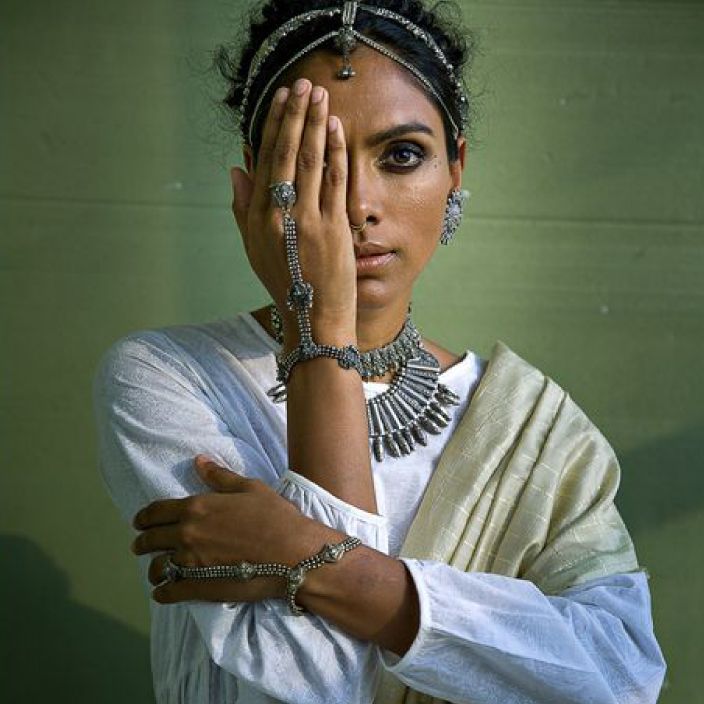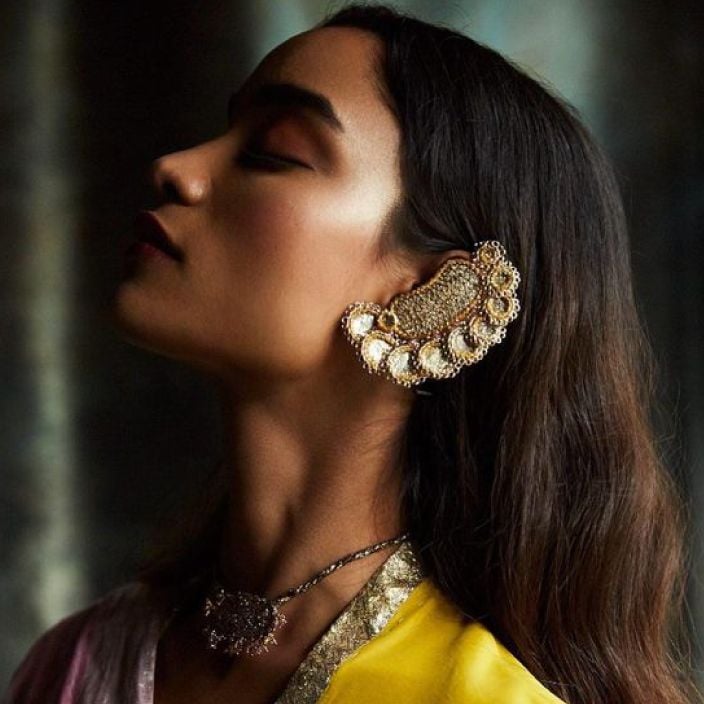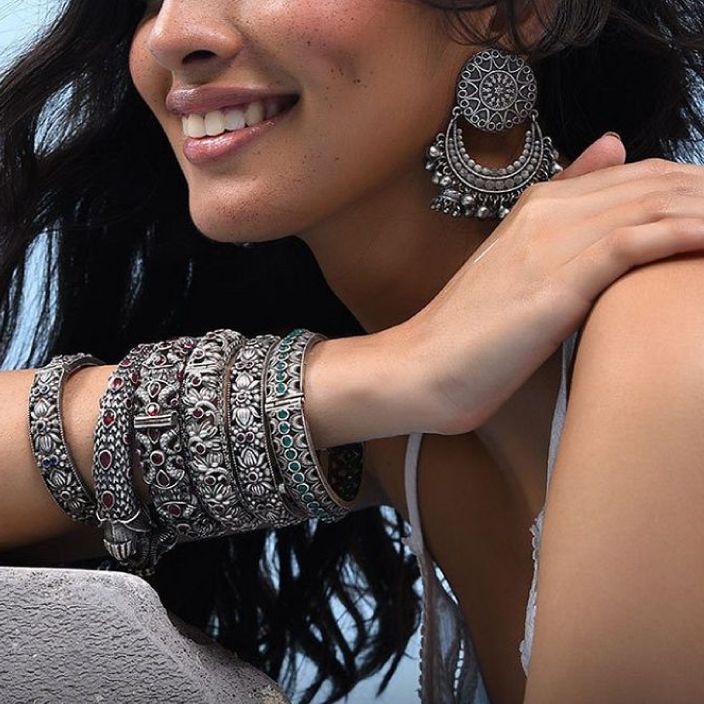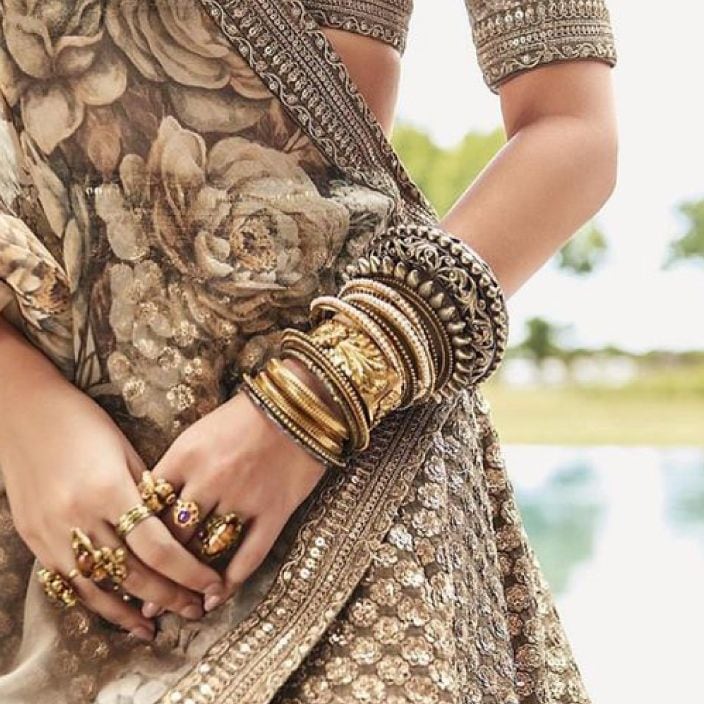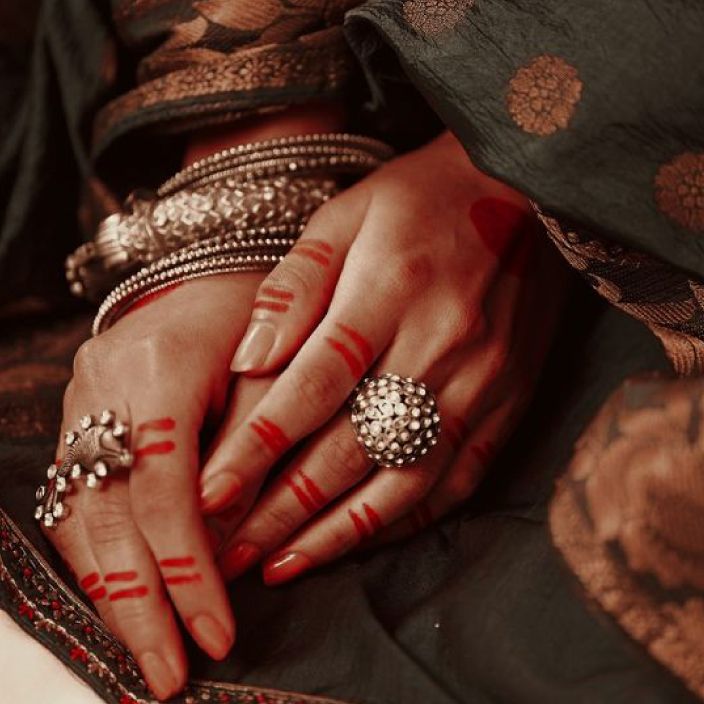For best prices and early deliveries, WhatsApp us at. 918488070070
Oxidised Jewellery
Oxidised jewellery has played a fascinating role in the history and heritage of various regions. Oxidised jewellery meaning refers to jewellery crafted using a deliberate process that darkens silver or other metals, creating a tarnished or antique finish. While silver jewellery is admired for its sparkly beauty, its oxidised version has created a unique dimension by fusing science with artistry. Primarily, oxidised jewellery was silver jewellery deliberately darkened to create a tarnish or patina. Though silver jewellery does tarnish when exposed to chemicals, perfumes, salt water, and humid conditions, it is oxidised artificially for aesthetic appeal. Oxidisation also protects the ornament from corrosion and gives it an antique finish. In the fashion industry, this type of jewellery is known by several names, such as blackened sterling silver jewellery, bohemian jewellery, ethnic tribal jewellery and vintage or antique jewellery. From necklaces, earrings, rings and bangles, oxidised jewellery is available in silver and artificial metal. It is used for aesthetic, spiritual and symbolic purposes, as a sign of status, to express love and loyalty, and to protect the wearer from evil spirits.
Tracing the Roots
Oxidised jewellery has travelled across continents for epochs. The history of oxidised jewellery dates back to around 3000 BCE. When the Egyptians saw their silver, gold, and copper ornaments tarnish or blacken, they found them visually appealing. Slowly, they introduced chemical treatments to oxidise jewellery to make it stand out on their white clothing. Oxidising agents like sulphur or ammonia were used to form a dark patina on metals, resulting in a beautiful shadowy effect.
Between 1000 BCE and 500 CE, the Greeks and Romans practised the Niello technique to create bold contrasts in silver jewellery. They used a mixture of copper, silver, sulphur, and lead in the engraved areas to give the jewellery a blackened look and highlight intricate patterns. In ancient Rome, exchanging oxidised rings was a sign of commitment and love. While oxidised necklaces, bracelets and earrings existed in the Byzantine Era and Middle Ages, they gained popularity in the Renaissance period from the 14th to 17th centuries. The era marked extraordinary creativity in manufacturing techniques and designs, laying the foundation for modern-day oxidised jewellery.
Oxidised silver jewellery continued to evolve throughout the Victorian era of the 19th century. Dark mourning jewellery adorned with intricate filigree and symbolic motifs was crafted using fossil coal called Jet. When the Art Nouveau and Art Deco movements took place in the late 19th and early 20th centuries, the oxidised finish became the picture-perfect backdrop for colourful gemstones and enamel accents. Since then, oxidised jewellery has occupied a place in universal jewellery collections. From symbolic to sensational, oxidised jewellery has come a long way.
African, Middle Eastern, and Indian cultures have used oxidised metal to create stunning jewellery. In India, oxidised jewellery is rooted in the diverse culture of its indigenous tribes spread across Rajasthan, Uttar Pradesh, Madhya Pradesh, Maharashtra, Gujarat, Chhattisgarh, Nagaland, Odisha, and Tamil Nadu. The Banjara tribe, the Gond tribe, the Bhil tribe, the Santhal tribe, the Lambani tribe, the Toda tribe, and the Naga tribe use oxidised jewellery not just as body adornment but as part of their cultural and social identity. Every tribe has distinct styles of necklaces, jhumkas, bangles, and anklets with dark patina and symbolic motifs inspired by regional tribal art and culture. Oxidised tribal jewellery even contains embellishments like semi-precious stones and beads, depending on the tribe’s culture. Today, tribal-style oxidised jewellery is captivating fashionistas around the world.
The Making of Oxidised Jewellery
Oxidisation in jewellery refers to intentionally darkening or tarnishing the metal surface by a chemical process without changing its internal colour or properties. An oxidising solution or compound such as liver of sulphur, potassium sulphide, or tellurium dioxide with hydrochloric acid 1% produces a layer of a black mineral coating called silver sulphide. At full strength, the colour will appear matte gunmetal black, but under controlled application, it can create shades of grey, blue, purple, yellow, and red. This patina or surface colour is a man-made version of the natural tarnishing process, typically used to highlight some aspects or raised elements in the design.
There are different ways to oxidise silver jewellery. Firstly, it can be done by placing the piece in a pressurised atmospheric compartment where traces of sulphur dioxide or other sulphur compounds slowly tarnish the surface. It can also be done by applying the solution to the intended surface or immersing it in a poly-sulphide solution. Leave the jewellery in the solution for about a minute or two until the surface turns black. Remove the jewellery from the solution and scrub the surface to check the exact colour. To obtain a dark charcoal black, repeat the process. Once you have the desired colour, place the jewellery in a bowl of cold water to stop further oxidisation.
Cultural Significance
The practice of wearing oxidised jewellery is common across tribes and cultures. In India, the Adivasi women wore arty oxidised bangles, necklaces, earrings, ear cuffs, and toe rings as ethnic insignias. Also, the Native Americans, Mexican Aztecs, Tibetan Buddhists, and Middle Eastern Bedouins have been wearing ornate pieces of oxidised silver jewellery that are both ornamental and functional.
The oxidised jewellery culture has survived centuries. In Ethiopia, oxidised jewellery inlaid with precious stones is still worn by Ethiopian brides. In India, oxidised jewellery is a hot-selling item during the Navratri festival. Women wear rustic-looking oxidised ornaments to complete the ethnic look while dancing the night away.
Evolution & Adaption
Oxidised jewellery has evolved from a natural process to a chemically or laser induced patina for a quicker, consistent, controlled and long-lasting antique finish. The designs have also progressed from traditional motifs and symbolism to abstract striking pieces.
In the vast tapestry of jewellery, oxidised jewellery continues to speak a universal language that resonates with different countries and cultures. From indigenous tribes to urban landscapes, oxidised jewellery has found a new identity in the fashion landscape.
